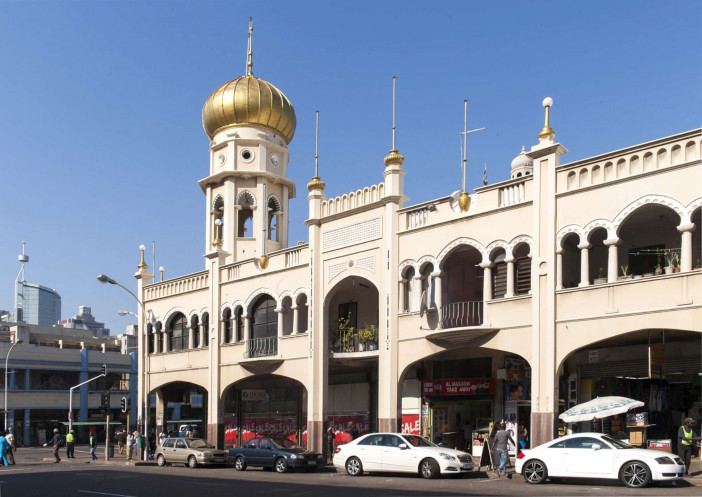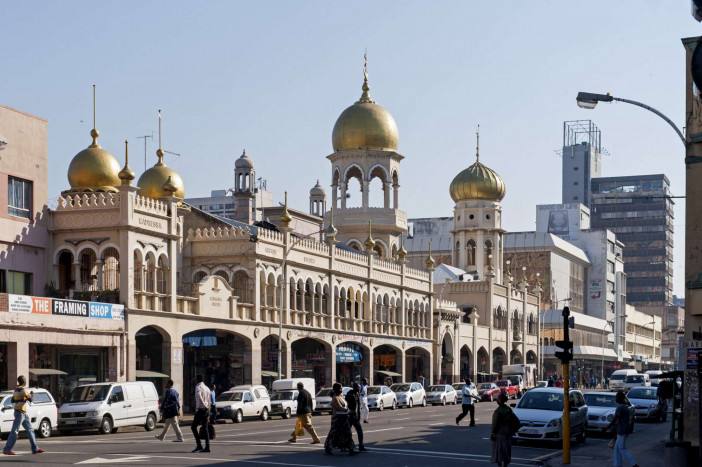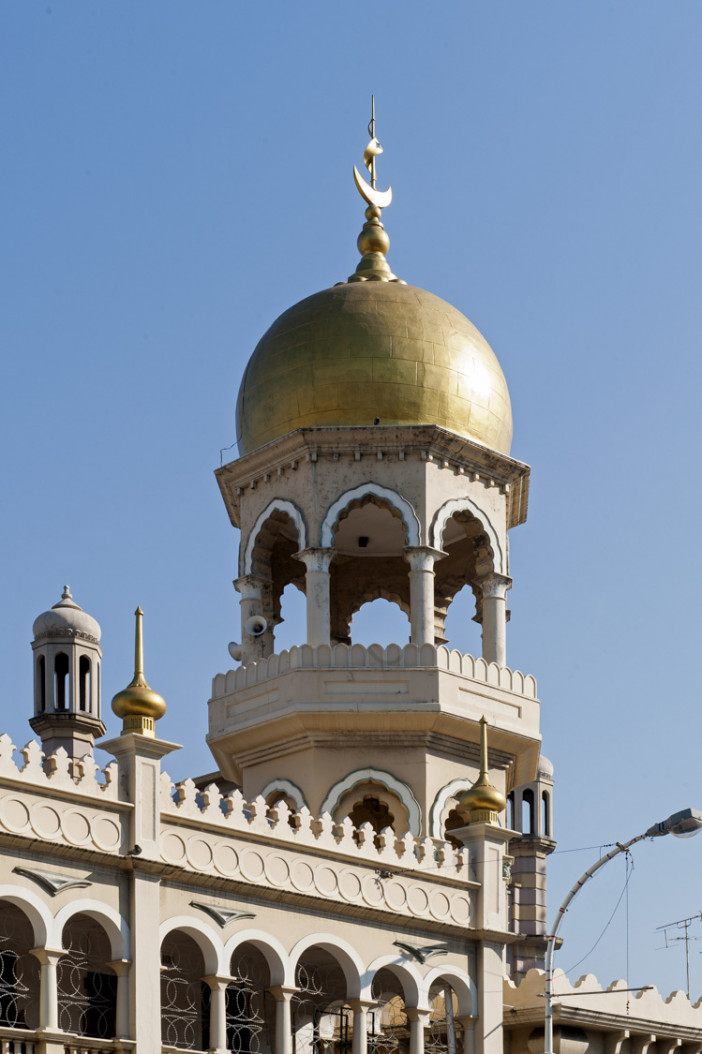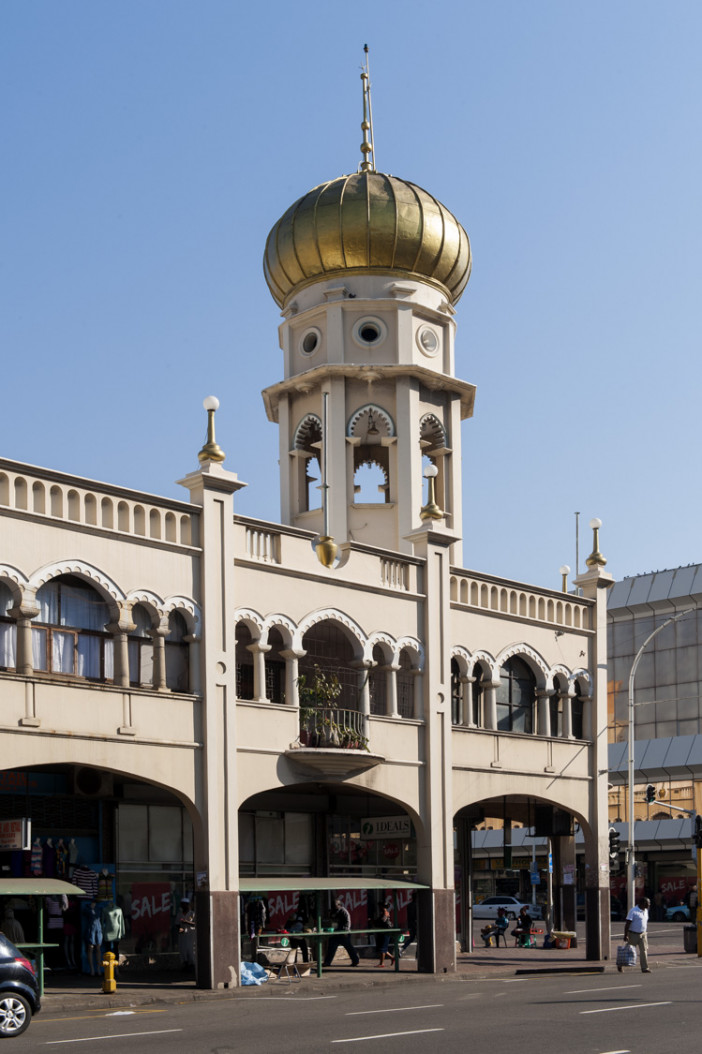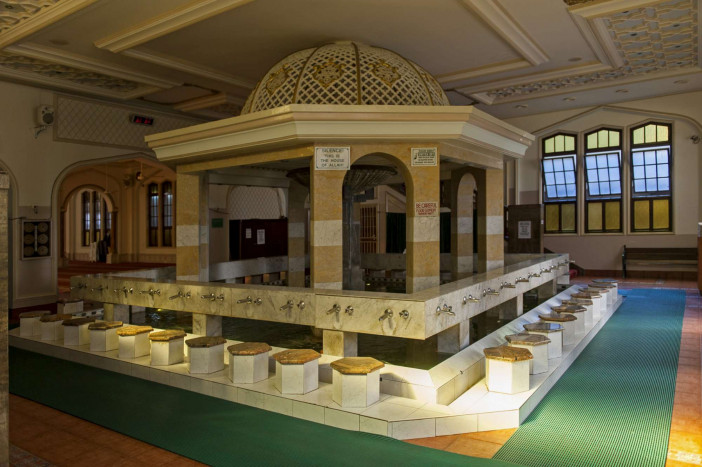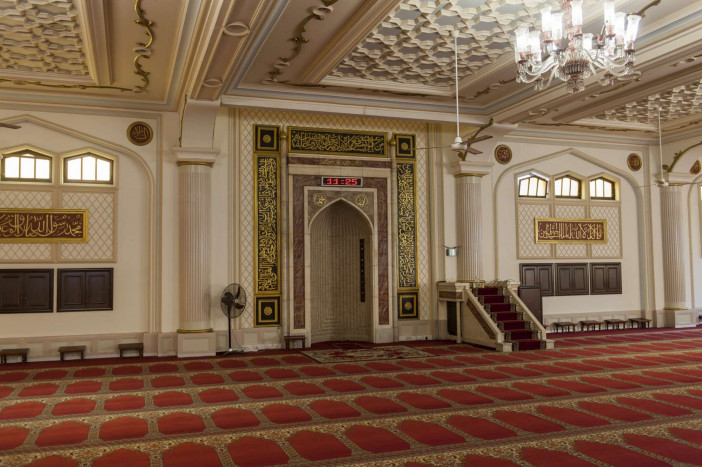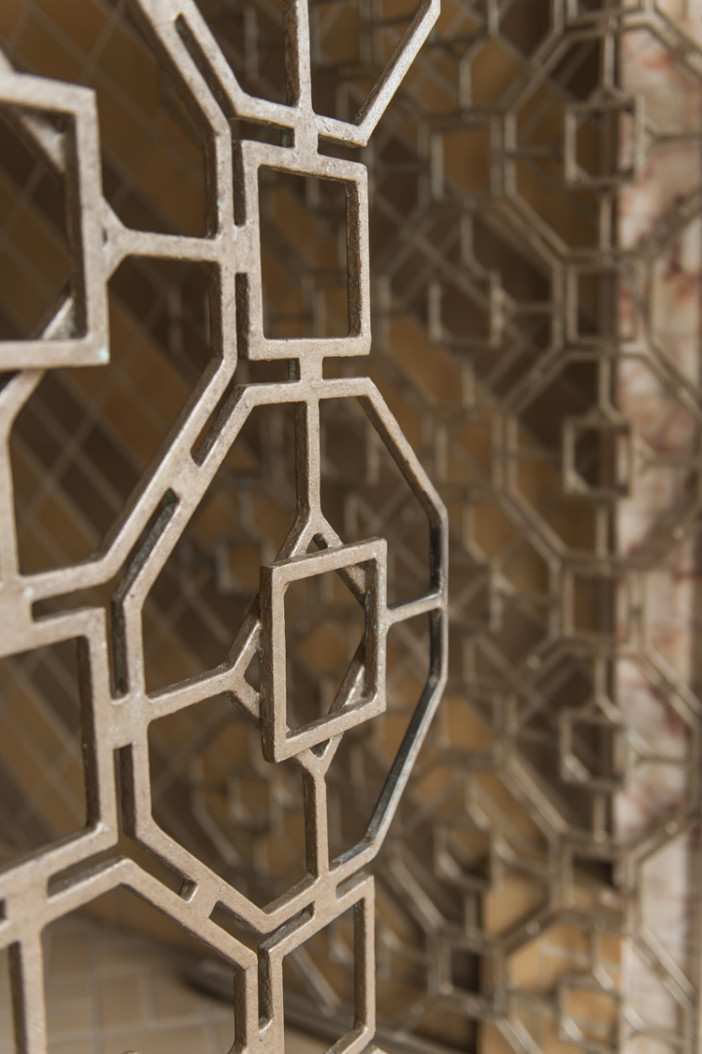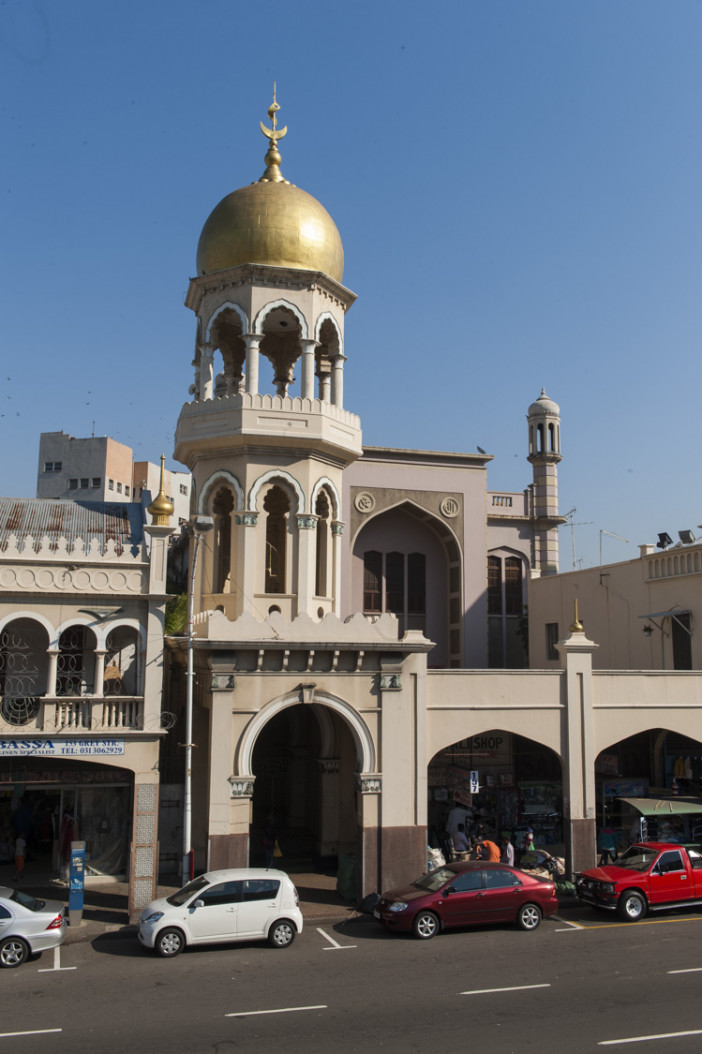Juma Mosque of Durban
History
In Durban, Kwazulu-Natal, South Africa, there is a mosque called The Juma Mosque of Durban, also known as "Mosque of The Congregation." It serves as the Muslim community of Durban's spiritual hub and is also known as the Grey Street Mosque. Aboobaker Amod Jhaveri and Hajee Mohamed paid K. Munsamy £115 in August 1881 for a plot of land on Grey Street (now known as Dr. Yusuf Dadoo Street) where they intended to build a mosque. The mosque was constructed on the site from a small brick and mortar building. Aboobaker's estate purchased a parcel of land next to the mosque in February 1884 to allow for further growth. Due to the rapid increase in the number of worshipers, Hajee Mahomed Dada, the last surviving trustee of the mosque, bought further adjacent land in 1889.
Urban and Architectural
The mosque's first of its two minarets was built in 1904. In addition, two stores were constructed next to the mosque, generating cash for upkeep. The mosque received a second minaret in 1905, and the back of the building also received a number of rooms, restrooms, and shower facilities for use by visitors. Also constructed were rooms for the Mu'adh-dhin. At one point, these two minarets were among the tallest buildings in Durban. Following the architects Payne & Payne's plans, the mosque was rebuilt in 1927. In 1943, William Bruce Barboure also contributed to the architecture of the structure. The structure is a distinctive fusion of Islamic ornamentation and robust vernacular design from the Union period. The mosque is essentially a network of connected structures, arcades, and passageways where trade, religion, and society coexist peacefully. The mosque had additional additions and modifications in 1943. The mosque building as it stands today is a sizable plastered construction with a variety of architectural styles. From the nearby girls' school to the mosque's roof is connected by a bridge. Since the school lacks a playground, students use the flat roof, which is normally used for prayer during festivals. The mosque has a primarily geometrical design.
Description
The arched entryway, interleading doors, and windows all highlight this geometric design. Its minarets, which have golden domes, tower above the busy commercial district, yet the marble worship space is serene and elegantly understated inside. The mosque held the title of largest mosque in the southern hemisphere up until the late 1970s.
References
https://mapcarta.com/fr/W471726381
https://www.sa-venues.com/things-to-do/kwazulunatal/visit-the-juma-masjid-mosque/
https://en.wikipedia.org/wiki/Juma_Mosque_(Durban)
Details
الموقع
Durban, South Africa
عدد المصليين
7000
المالك / المتبرع
Aboobaker Amod Jhaveri and Hajee Mohamed
المعماري
تاريخ البناء
1930
Area
14000
الرسومات المعمارية
الخريطة
History
In Durban, Kwazulu-Natal, South Africa, there is a mosque called The Juma Mosque of Durban, also known as "Mosque of The Congregation." It serves as the Muslim community of Durban's spiritual hub and is also known as the Grey Street Mosque. Aboobaker Amod Jhaveri and Hajee Mohamed paid K. Munsamy £115 in August 1881 for a plot of land on Grey Street (now known as Dr. Yusuf Dadoo Street) where they intended to build a mosque. The mosque was constructed on the site from a small brick and mortar building. Aboobaker's estate purchased a parcel of land next to the mosque in February 1884 to allow for further growth. Due to the rapid increase in the number of worshipers, Hajee Mahomed Dada, the last surviving trustee of the mosque, bought further adjacent land in 1889.
Urban and Architectural
The mosque's first of its two minarets was built in 1904. In addition, two stores were constructed next to the mosque, generating cash for upkeep. The mosque received a second minaret in 1905, and the back of the building also received a number of rooms, restrooms, and shower facilities for use by visitors. Also constructed were rooms for the Mu'adh-dhin. At one point, these two minarets were among the tallest buildings in Durban. Following the architects Payne & Payne's plans, the mosque was rebuilt in 1927. In 1943, William Bruce Barboure also contributed to the architecture of the structure. The structure is a distinctive fusion of Islamic ornamentation and robust vernacular design from the Union period. The mosque is essentially a network of connected structures, arcades, and passageways where trade, religion, and society coexist peacefully. The mosque had additional additions and modifications in 1943. The mosque building as it stands today is a sizable plastered construction with a variety of architectural styles. From the nearby girls' school to the mosque's roof is connected by a bridge. Since the school lacks a playground, students use the flat roof, which is normally used for prayer during festivals. The mosque has a primarily geometrical design.
Description
The arched entryway, interleading doors, and windows all highlight this geometric design. Its minarets, which have golden domes, tower above the busy commercial district, yet the marble worship space is serene and elegantly understated inside. The mosque held the title of largest mosque in the southern hemisphere up until the late 1970s.


